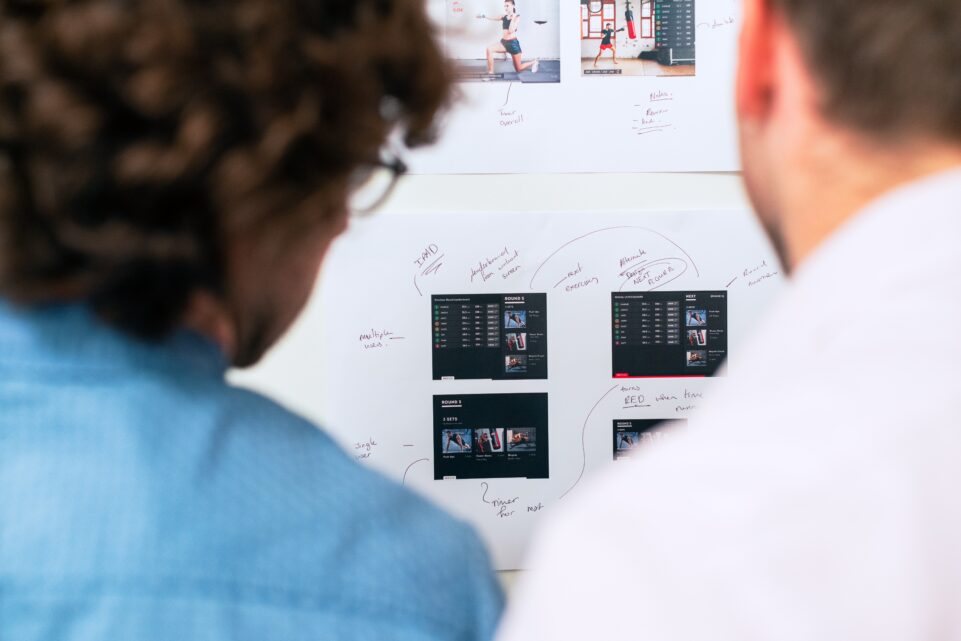Discover how to improve your ranking through SEO for images and take advantage of search engines such as Google News, Google Discover, Image Search and many others.
When marketers and small business owners get lost among keywords, content strategies, backlinks, metadata, and so on, they tend to forget that a correct management of keywords, content strategies, backlinks, metadata, and so on, they tend to forget that a correct management of keywords and metadata is the most important thing. high quality images and videos is essential for your brand's content to reach your potential customers, from Google News, Google Discover, Image Search and many more.
You can improve the positioning of your site (web, blog, e-commerce, apps) through SEO for images (image SEO)!
The time and effort that goes into SEO should not be underestimated, it is vital to connect with potential customers, as even with social networking more than 85% of buyers start their process with a web search such as Google, Bing and Yahoo! Among the practical skills you need to execute to improve your ranking, the image optimization for SEO has become more and more important in recent years, even many contents require images in order for the content to rank.
Why is SEO for images important?
In short, image optimization (image SEO in English) offers SEO benefits such as:
- Improved speed of your page (because it reduces the file size).
- Drives the organic rankings (by improving the speed of the web site, very important).
- Increases the conversions (if a site is slow, many customers will leave before they see what you have to offer).
- Add quality to your content (complementing text with images or videos).
- Creates a better user experience.
How can I use images and videos to improve my SEO ranking?
In this regard, we have compiled a list of five tips that will help you get the most out of the visual content of your company to position yourself in search engines.
1.- Quality and relevant graphics for your audience.
Have images that help your customers identify with your brand, your content and your objectives should be the first selection criteria, as this will help your content increase its potential audience.
If you have the opportunity you can choose to create your own contenteither on your own, or through an agencythe cost-benefit ratio for both the positioning and for the engagement of your audience will make it worthwhile.
However, it is a myth that only original content is indispensable to improve a brand's ranking. You can with peace of mind opt for stock images and videosare used all over the world every day and work very well to represent the content returned by organic search.
Pages such as Canva, iStock, Pixabay can offer you excellent content options for both images and video, as mentioned above, the key is to know how to select quality and, above all, relevance. that the content has for your audience.
2.- Make decisions based on data
A good strategy to select the best content is to use statistics, just as you use statistics to select the best content. Google Trends to select keywords, there are new tools for visual content trending such as VisualGPS which extracts data from billions of iStock.com user searches. This tool displays relevant information from one of the world's leading providers of visual content.
Thanks to this tool you can explore specific keywords and phrasesIt also shows related words and phrases, to target the exact terminology that segment is using to search for a concept. It also displays related words and phrases, to target the exact terminology that segment is using to search for a concept, then shows the most downloaded images, videos and illustrations. The more information and data you get about what your audience wants to see, the better prepared you will be to offer interesting and, above all, relevant content to your audience.
Have you already selected your material? Then, the next step is to implement the most effective techniques for making your images part of your content positioningTo do this, the first thing to do is to use the correct image size.

3.- Use the correct image size.
I'm sure you've heard the phrase "less is more"well, it is also applicable in this case, especially since the loading speed can impair the user experience (in fact, conversions drop by an average of 4.42% per each additional second of charging time) And the main culprit? The heavy images!
Good quality graphics does not necessarily mean that all your images are of good quality. the highest resolution. An image of 4032 pixels wide where the maximum display dimension is 600 pixels only. will create a large contentThe image will be too heavy, which will make loading slow or even fall into the embarrassing icon indicating that there should be an image there. Remember, if Google PageSpeed Insights is happy, you and your users will be happy too ?.
The ideal size for web images should be 70kb-100kb (or less). We recommend a high resolution image of at least 1200 pixels (px) wide in ratios of 16×9, 4×3 or 1×1. However, if the image display space is smaller, for example, 500 px wide and 400 px high, reduce it to the requested size, in Photoshop it works, as well as with a tool like Canva.
4.- Add information to your images
The most basic, the ?ALT? text (alternative)If you are not familiar with the term, you should know that it is part of the HTML code and provides a text description for each image that clearly explains what it shows and what it does not. can help Google (who cannot read images) to better understand the content of an image and to classify it.
If you are reading this second paragraph, you will have avoided falling into the trap of the "ALT" text, which is where most of them stay, and therefore fail to exploit the full potential of optimizing images. According to the Google Images best practicesIf you add more context to the images, the results will be much more useful, which can generate higher quality traffic to your site.
Be sure to be descriptive with titles, subtitles, filenames, and file namesespecially when we use an image that comes from a download or a cell phone photo, as these will have a generic title such as "273012244_51592775756464106019_5718201929963725089_n" which does not provide any relevant information about the content of the photo and is not valid for SEO. If you have an e-commerce Do you have to do it with the photo of each product? Mmmm... only of those that you really want to sell, which most probably, are all of them.
The text of the TITLE tag is the one that will be displayed when you hover the cursor over the photo. and in image search results, this title will appear below the image. If you use it correctly, users will know what to expect if they enter your site by clicking on the image.
You can take advantage of these spaces to use keywords in your contentyou must do so judiciously, keeping in mind the objective that the description is descriptive and relevant. Do not include too many keywords, especially in the alt attributes, as it causes a bad user experience and may cause your site to be considered spam.
Generally, these same tips apply to video content. Your content, the words you say within the video, the title and the description all contribute to your ranking results. YouTube, for example, automatically creates a transcript of what the video says, not only for the captioning functions, but also to understand what the video is about.
5. Submit a sitemap for images to search engines.

It is true that all sites create a sitemap to submit to search engines, but a sitemap specifically for images is very worthwhile, as it increases the chance that your images will be indexed and appear in search results. This file includes the URL of each of the images that appear on your website, the title, the license and the caption. If you don't know how to create it, we do it for you.
There is a key difference between creating an image sitemap and creating one that includes your web pages. As Google says:
"Image sitemaps can contain URLs from other domains, unlike normal sitemaps, which impose cross-domain restrictions. This makes it possible to use CDNs (content delivery networks) to host images."
Now, you can realize that web entries go far beyond the decorative element, and that SEO for images is an exceptional weapon to attract audience through a call to attention, but, above all, they are a useful tool for the positioning of your brand.


